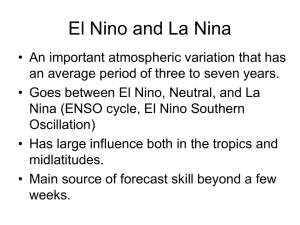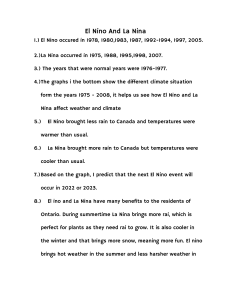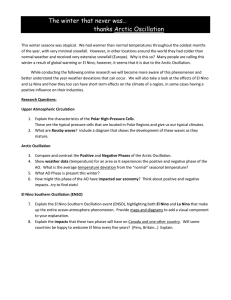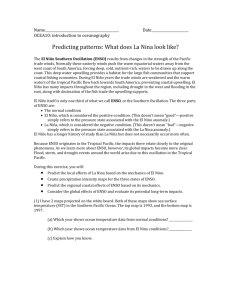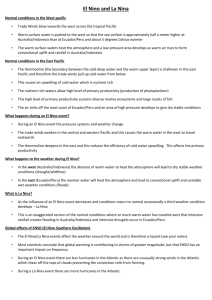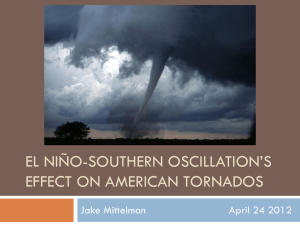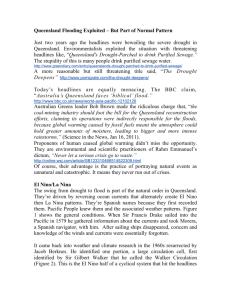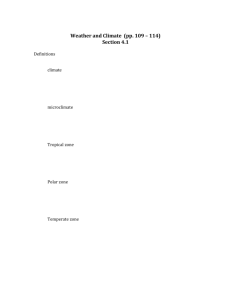Abstract
advertisement
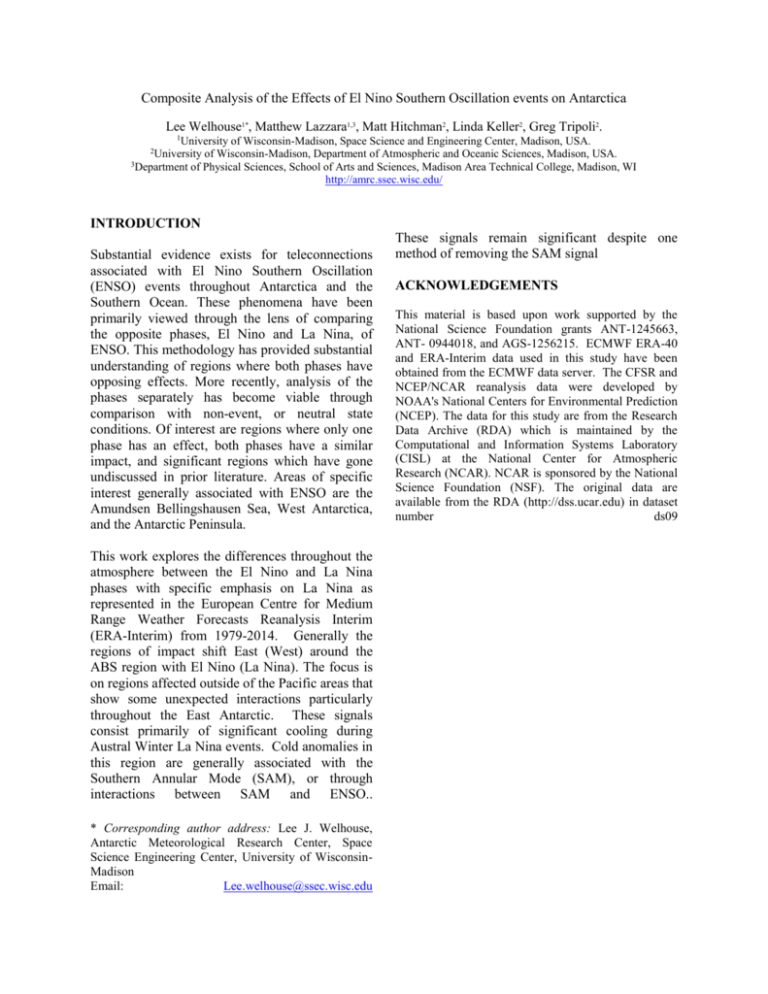
Composite Analysis of the Effects of El Nino Southern Oscillation events on Antarctica Lee Welhouse1*, Matthew Lazzara1,3, Matt Hitchman2, Linda Keller2, Greg Tripoli2. 1University of Wisconsin-Madison, Space Science and Engineering Center, Madison, USA. of Wisconsin-Madison, Department of Atmospheric and Oceanic Sciences, Madison, USA. 3Department of Physical Sciences, School of Arts and Sciences, Madison Area Technical College, Madison, WI http://amrc.ssec.wisc.edu/ 2University INTRODUCTION Substantial evidence exists for teleconnections associated with El Nino Southern Oscillation (ENSO) events throughout Antarctica and the Southern Ocean. These phenomena have been primarily viewed through the lens of comparing the opposite phases, El Nino and La Nina, of ENSO. This methodology has provided substantial understanding of regions where both phases have opposing effects. More recently, analysis of the phases separately has become viable through comparison with non-event, or neutral state conditions. Of interest are regions where only one phase has an effect, both phases have a similar impact, and significant regions which have gone undiscussed in prior literature. Areas of specific interest generally associated with ENSO are the Amundsen Bellingshausen Sea, West Antarctica, and the Antarctic Peninsula. This work explores the differences throughout the atmosphere between the El Nino and La Nina phases with specific emphasis on La Nina as represented in the European Centre for Medium Range Weather Forecasts Reanalysis Interim (ERA-Interim) from 1979-2014. Generally the regions of impact shift East (West) around the ABS region with El Nino (La Nina). The focus is on regions affected outside of the Pacific areas that show some unexpected interactions particularly throughout the East Antarctic. These signals consist primarily of significant cooling during Austral Winter La Nina events. Cold anomalies in this region are generally associated with the Southern Annular Mode (SAM), or through interactions between SAM and ENSO.. * Corresponding author address: Lee J. Welhouse, Antarctic Meteorological Research Center, Space Science Engineering Center, University of WisconsinMadison Email: Lee.welhouse@ssec.wisc.edu These signals remain significant despite one method of removing the SAM signal ACKNOWLEDGEMENTS This material is based upon work supported by the National Science Foundation grants ANT-1245663, ANT- 0944018, and AGS-1256215. ECMWF ERA-40 and ERA-Interim data used in this study have been obtained from the ECMWF data server. The CFSR and NCEP/NCAR reanalysis data were developed by NOAA's National Centers for Environmental Prediction (NCEP). The data for this study are from the Research Data Archive (RDA) which is maintained by the Computational and Information Systems Laboratory (CISL) at the National Center for Atmospheric Research (NCAR). NCAR is sponsored by the National Science Foundation (NSF). The original data are available from the RDA (http://dss.ucar.edu) in dataset number ds09

